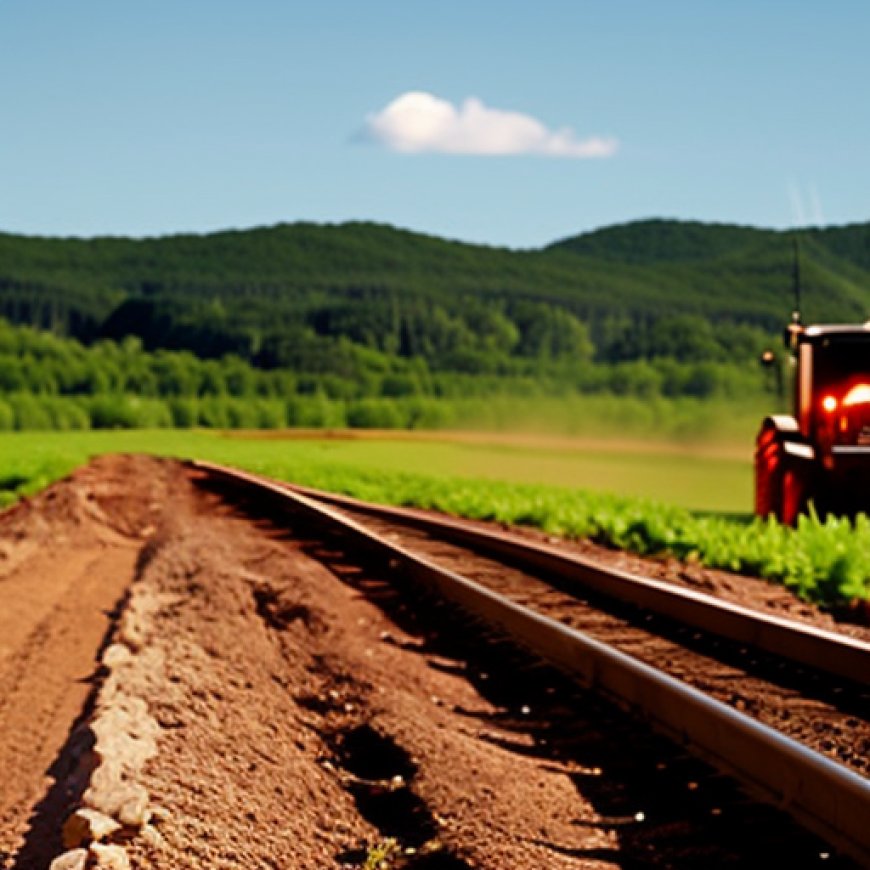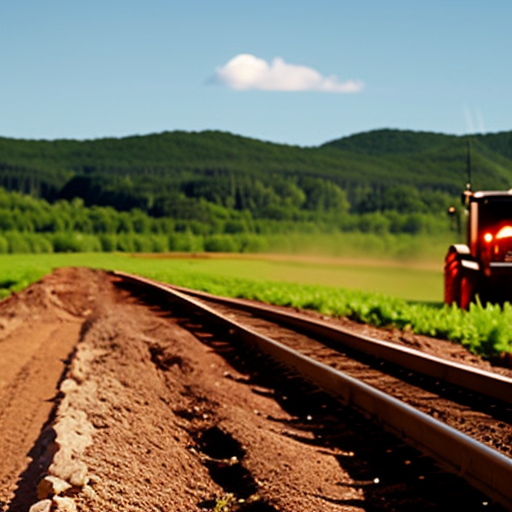WVU Today | WVU spearheading regional USDA project to increase agricultural production
WVU Today | WVU spearheading regional USDA project to increase agricultural production WVU Today


West Virginia University Leads Effort to Increase Farmland Availability and Support Underserved Populations
Introduction
West Virginia University (WVU) is taking the lead in one of the 50 projects aimed at increasing farmland availability to underserved populations. This initiative also aims to assist producers in obtaining working capital and means of food distribution.
Project Overview
The WVU Institute for Community and Rural Health (ICRH) has been awarded a five-year, $8.5 million cooperative agreement grant for the U.S. Department of Agriculture’s Increasing Land Access Program. This program is funded by President Joe Biden’s Inflation Reduction Act.
The project, titled “Working Lands of Central Appalachia,” covers West Virginia, Pennsylvania, Virginia, and North Carolina. WVU is partnering with 11 state, regional, and national organizations to address agricultural workforce training, farm-to-institution markets, and food as medicine. The project’s main focus is to assist underserved veterans, people with limited resources, and beginning and socially disadvantaged farmers.
Sustainable Development Goals (SDGs)
This project aligns with several Sustainable Development Goals (SDGs), including:
- SDG 1: No Poverty
- SDG 2: Zero Hunger
- SDG 3: Good Health and Well-being
- SDG 8: Decent Work and Economic Growth
- SDG 10: Reduced Inequalities
- SDG 17: Partnerships for the Goals
Increasing Farmland Availability
To increase the availability of farmlands, the WVU project team, led by Megan Govindan, will conduct audits of public and private holdings. This includes assessing public farmlands owned by the West Virginia Department of Agriculture, WVU, and community hospitals. The input from landowners will help determine how to increase access and production at these sites.
Private farmlands, such as heirs’ property, will also be addressed. These are properties that were passed down without a will or clear deed, which can create difficulties in obtaining federal benefits. As these private lands become available to individuals interested in farming or increasing efficiencies, Govindan expects to see opportunities for agricultural careers and training.
Farm-to-Institution Pathways
The project partners plan to build on government policies that require certain institutions to include fresh food in their meal plans. They will also leverage another policy that mandates nonprofit hospitals to complete community health needs assessments. Using this data, the project will create an anchor collaborative to manage local food procurement and community benefit provisions.
Other organization partners will offer training to farmers on how to begin selling or increase product offerings to institutions and community markets.
Food as Medicine for Healthier Communities
The project will oversee a needs assessment and develop a curriculum that integrates agriculture and health. This curriculum aims to make fresh food more accessible in communities and improve food security.
WVU student organizations, Project REACH and Rural Health Interest Group, will support the cultivation of healthier rural communities. Students involved in the project will gain cultural competency and an understanding of the barriers rural communities face.
Conclusion
This project not only addresses the social determinants of health but also supports the recruitment and retention of healthcare practitioners. By leveraging its network of resources, the project aims to accomplish its goals in each focus area and create pathways for land, capital, and market access.
– WVU –
Contact Information
MEDIA CONTACT: Linda Skidmore
Health Research Writer
WVU Research Communications
Linda.Skidmore@hsc.wvu.edu
Call 1-855-WVU-NEWS for the latest West Virginia University news and information from WVUToday.
SDGs, Targets, and Indicators Identified in the Article
| SDGs | Targets | Indicators |
|---|---|---|
| SDG 1: No Poverty | 1.4: By 2030, ensure that all men and women, in particular the poor and the vulnerable, have equal rights to economic resources, as well as access to basic services, ownership, and control over land and other forms of property, inheritance, natural resources, appropriate new technology, and financial services, including microfinance. | – The project aims to increase farmland availability to underserved populations, including people with limited resources and socially disadvantaged farmers. – The project will conduct audits of public and private farmlands to determine how to increase access and production at these sites. – Private farmlands, such as heirs’ property, will be made available to those interested in farming or increasing efficiencies. |
| SDG 2: Zero Hunger | 2.3: By 2030, double the agricultural productivity and incomes of small-scale food producers, in particular women, indigenous peoples, family farmers, pastoralists, and fishers, including through secure and equal access to land, other productive resources and inputs, knowledge, financial services, markets, and opportunities for value addition and non-farm employment. | – The project aims to increase farmland availability and support agricultural communities to increase food access. – The project will provide training to farmers on how to begin selling or increase product offerings to institutions and community markets. |
| SDG 3: Good Health and Well-being | 3.4: By 2030, reduce by one-third premature mortality from non-communicable diseases through prevention and treatment and promote mental health and well-being. | – The project will integrate agriculture and health through a curriculum that aims to make communities more food secure. – The project provides health science students with food as medicine experiences to improve their ability to practice in rural areas and address social determinants of health. |
| SDG 8: Decent Work and Economic Growth | 8.3: Promote development-oriented policies that support productive activities, decent job creation, entrepreneurship, creativity, and innovation, and encourage the formalization and growth of micro-, small-, and medium-sized enterprises, including through access to financial services. | – The project aims to support agricultural future by utilizing existing markets and finding sources of capital, whether policy-focused or otherwise. – The project will provide training activities to support land, capital, and market access for agricultural communities. |
| SDG 10: Reduced Inequalities | 10.2: By 2030, empower and promote the social, economic, and political inclusion of all, irrespective of age, sex, disability, race, ethnicity, origin, religion, or economic or other status. | – The project focuses on assisting underserved veterans, people with limited resources, and beginning and socially disadvantaged farmers in accessing farmland and agricultural opportunities. |
| SDG 17: Partnerships for the Goals | 17.16: Enhance the global partnership for sustainable development, complemented by multi-stakeholder partnerships that mobilize and share knowledge, expertise, technology, and financial resources, to support the achievement of the sustainable development goals in all countries, in particular developing countries. | – The project involves partnering with 11 state, regional, and national organizations to address agricultural workforce training, farm-to-institution markets, and food as medicine. – The project incorporates a network of resources and organizations to accomplish its goals in various focus areas. |
Behold! This splendid article springs forth from the wellspring of knowledge, shaped by a wondrous proprietary AI technology that delved into a vast ocean of data, illuminating the path towards the Sustainable Development Goals. Remember that all rights are reserved by SDG Investors LLC, empowering us to champion progress together.
Source: wvutoday.wvu.edu

Join us, as fellow seekers of change, on a transformative journey at https://sdgtalks.ai/welcome, where you can become a member and actively contribute to shaping a brighter future.







